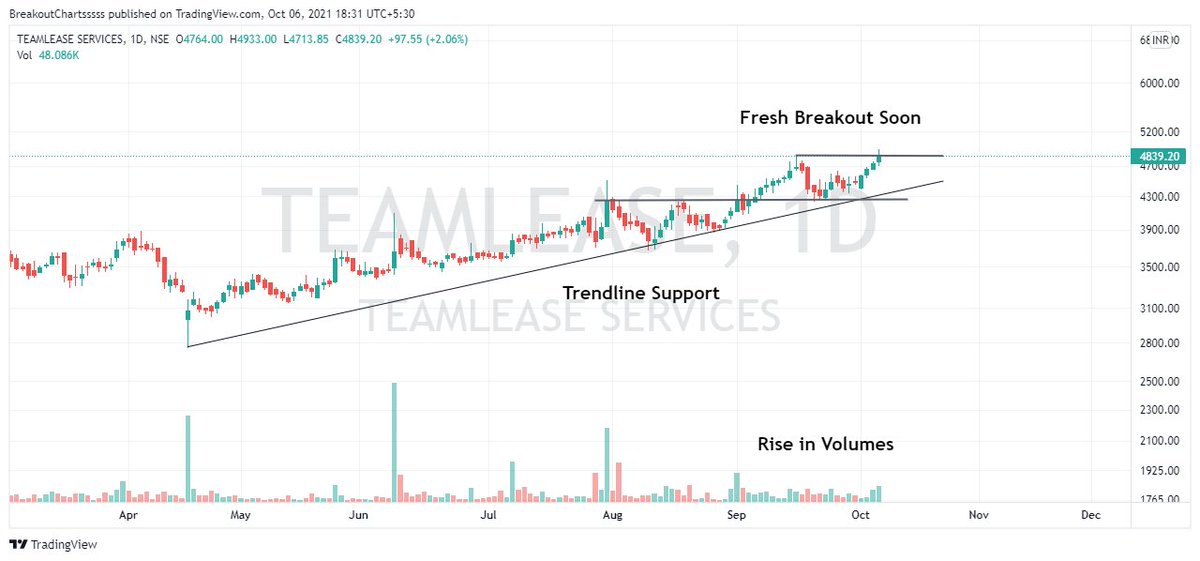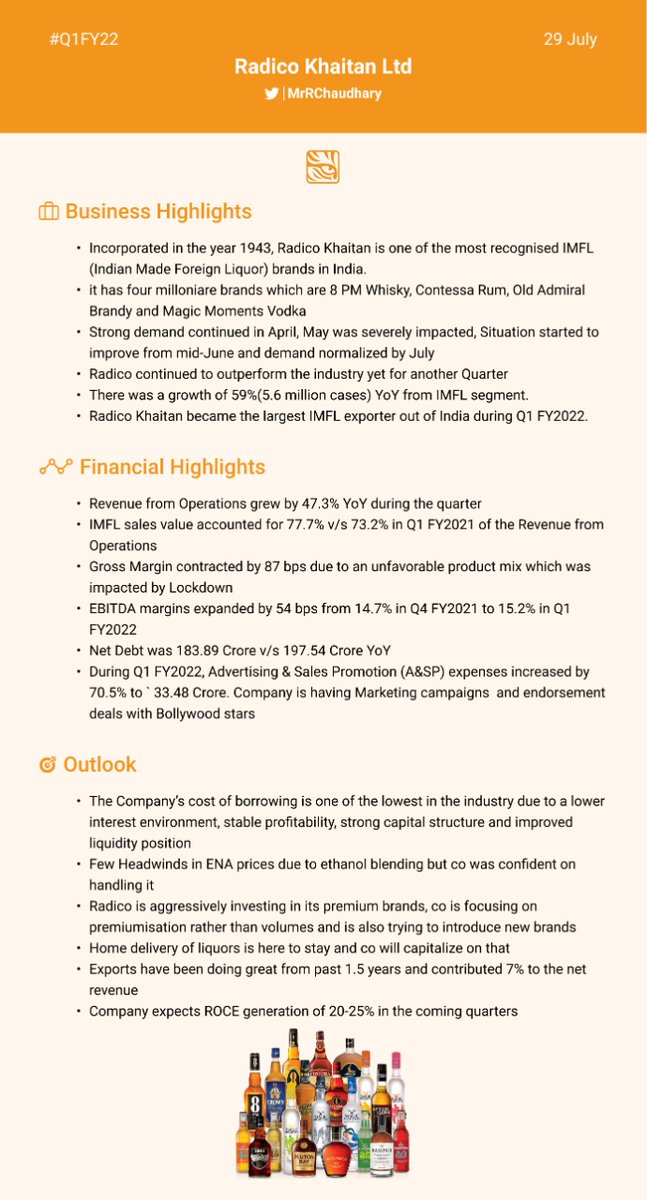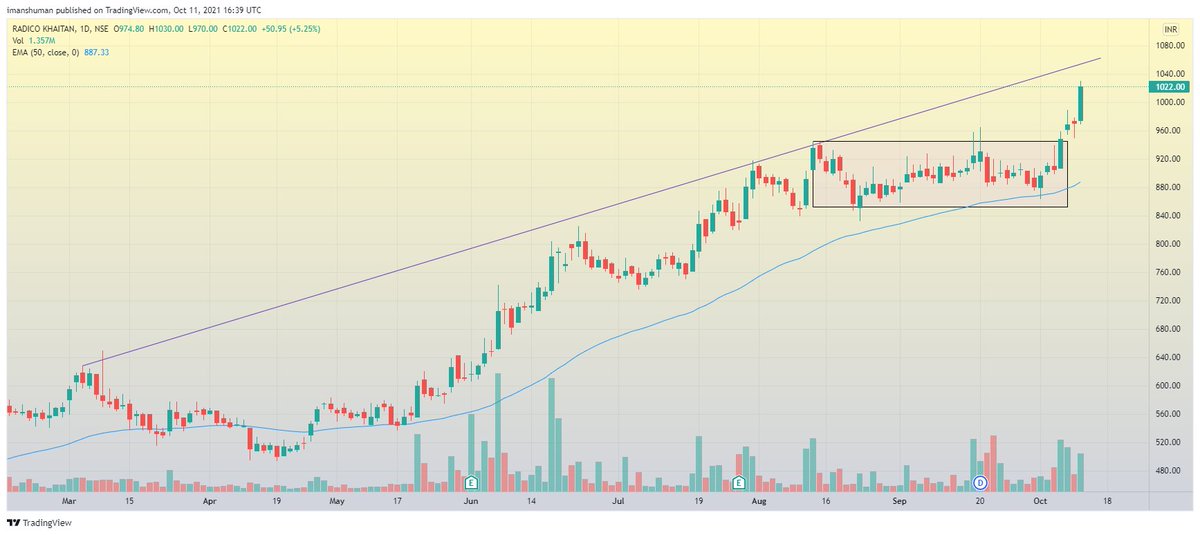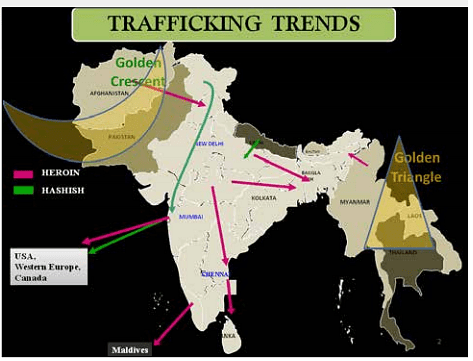Stocks to Watch out
1. Team Lease
2. BEML
3. Radico Khaitan
4. Advanced Enzymes
Charts to Try
1. Nifty 50
2. CNX Mid Cap
3. CNX Small Cap
I would suggest to try's the above 3 mentioned and analyze

More from Radico
#RadicoKhaitan - Concall Snippet !
ROCE GENERATION of 20-25% In Coming Qtrs !
(Weekend Is Coming😏) https://t.co/vQw9N2UFgZ

ROCE GENERATION of 20-25% In Coming Qtrs !
(Weekend Is Coming😏) https://t.co/vQw9N2UFgZ

#TataCoffee - Concall Snippet !
— Raghav Chaudhary (@MrRChaudhary) July 29, 2021
Expects Margin Expansion in India Coffee.
(Only For Educational Purpose) pic.twitter.com/Dcd6uW7l0R
#Radico reached our 1st target and is trading at 870 now.
@MD_ABNSTOCKS
@MD_ABNSTOCKS
#Radico #StockToWatch #Stock #Equity #StockMarket
— Team MD&ABN (@team_md_abn) July 10, 2021
CMP - 779
Entry - once price closes above 783 in the hourly chart
Pattern invalid below - 736.50
Possible upside Levels
Conservative - 866
Aggressive - 944@caniravkaria pic.twitter.com/6xD7oywkNC
You May Also Like
Neo-nazi group #PatriotFront held a photo op in #Chicago last weekend & is currently marching around #DC so it's as good time as any to compile a list of their identified members for folks to watch for
Who are these chuds?
Patriot Front broke away from white nationalist org Vanguard America following #unitetheright in #charlottesville after James Alex Fields was seen with a VA shield before driving his car into a crowd, murdering Heather Heyer & injuring dozens of others
Syed Robbie Javid a.k.a. Sayed Robbie Javid or Robbie Javid of Alexandria,
Antoine Bernard Renard (a.k.a. “Charlemagne MD” on Discord) from Rockville, MD.
https://t.co/ykEjdZFDi6

Brandon Troy Higgs, 25, from Reisterstown,
Who are these chuds?
Patriot Front broke away from white nationalist org Vanguard America following #unitetheright in #charlottesville after James Alex Fields was seen with a VA shield before driving his car into a crowd, murdering Heather Heyer & injuring dozens of others
Syed Robbie Javid a.k.a. Sayed Robbie Javid or Robbie Javid of Alexandria,
Happy Monday everyone :-) Let's ring in September by reacquainting ourselves with Virginia neo-Nazi and NSC Dixie affiliate Sayed "Robbie" Javid, now known by "Reform the States". Robbie is an explicitly genocidal neo-Nazi, so lets get to know him a bit better!
— Garfield but Anti-Fascist (@AntifaGarfield) August 31, 2020
CW on this thread pic.twitter.com/3gzxrIo9HD
Antoine Bernard Renard (a.k.a. “Charlemagne MD” on Discord) from Rockville, MD.
https://t.co/ykEjdZFDi6

Brandon Troy Higgs, 25, from Reisterstown,
























